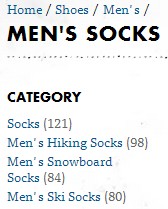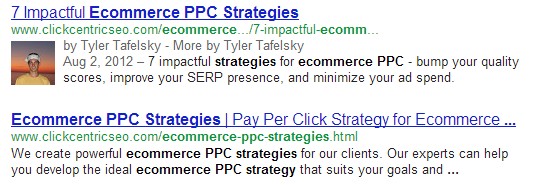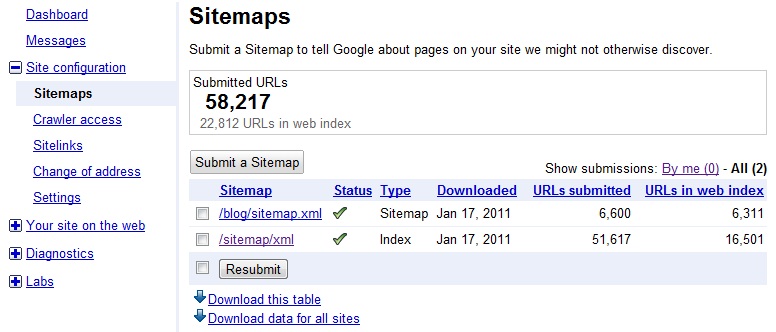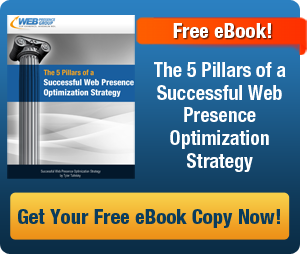6 Website Optimization Tips to Improve SEO & CRO
Website optimization is an ambiguous phrase that’s used in many content. But really, the simple definition of website optimization is the effort of making a website perform better.
Whether to perform better for usability, search engine optimization (SEO), or conversion rate optimization (CRO), many processes of website optimization overlap in their core purpose. That is, one component of optimizing a website may improve all of the latter performance benefits.
So to enlighten you on some ways to optimize your website, below I share with you six website optimization tips that contribute to better SEO and CRO. These website optimization tips can help you pinpoint weaknesses of your website, helping you to gain better rankings in search, as well as convert more visitors that land on your website.
1. Build an Intuitive Navigation
 One of the most important aspects of having a well-optimized website is the navigation. This includes how well pages and categories are organized and linked together (contributing to SEO,) as well as the cohesion of the navigation’s layout and structure (for CRO).
One of the most important aspects of having a well-optimized website is the navigation. This includes how well pages and categories are organized and linked together (contributing to SEO,) as well as the cohesion of the navigation’s layout and structure (for CRO).
Building an intuitive website navigation is like piecing together a textbook. The reader should have a clear understanding of the chapters and sections that makeup the book’s content. Think of each chapter as a primary category of your website, and each section as sub-category or individual webpage. The idea is to ensure users can find what they are looking for without getting lost or confused.
In addition, the pages that makeup each chapter of your website build upon the overall keyword authority of your domain. So if you have a category page optimized for Keyword A, then a supportive sub-category page should be optimized for Long-Tail Keyword A. This will only promote the website’s overall rankings potential for Keyword A, especially if optimized internal linking is implemented.
2. Implement Optimized Internal Linking
Optimized internal linking is the practice of linking one relevant page of your website with another, while using keyword-focused anchor text. Not only does this help the spider-ability throughout your website, but it contributes to greater SEO keyword relevancy of your optimized webpages.
However like external link building, you’ll want to be careful not to overdue do it with optimized anchor text. This practice can pose the risk of your website being dinged for “over optimization”. Instead, keep it natural and only build internal links in the copy when it makes sense from a user’s perspective.

A second and perhaps even more powerful benefit of implementing optimized internal linking is seeing “double-stack” listings the search engine results. This typically occurs only when the keyword search closely matches your link’s anchor text, as well as the keyword relevancy of the pages being linked together.
3. Keyword Optimized Webpages
Keyword optimization is an imperative part of the SEO process. In order for your website to achieve its fullest SEO potential, the pages of your website need to establish keyword relevancy. So in essence, “keyword optimization” is simply including the keywords on the page and in the right places.
The best practices of on-page SEO and keyword optimization has drastically changed over the last year. With Google’s search engine algorithm updates (namely “Panda,”) a high keyword density is not the way to go. Although there is a lot of debate on this topic, based on our research and experiments the optimal keyword density for your webpages is about 2-3%. Some may argue that more is better, but really that’s a risk not worth taking. It’s important to keep in mind that off-page SEO, such as social signals and contextually-relevant backlinks have the most weight in determining keyword rankings.
Lastly, you should be aware of the specific page elements or HTML tags that should be keyword optimized. Three major webpage elements include the meta title, description, and page copy. This is pretty rudimentary SEO stuff, so don’t take it too seriously. Rather, write your pages for your users, and include your keyword phrases naturally. To learn a bit on the specifics of keyword optimizing your webpages, visit the blog at www.OrganicSEOCopywriters.com.
4. Create Segmented Sitemaps
Creating segmented sitemaps is a great website optimization technique for very large websites, such ecommerce stores. Segmented sitemaps are pretty much exactly as their name appears. You simply break-down a very lengthy HTML sitemap into several relevant categories.
For instance, let’s say your performing some ecommerce search engine optimization for a website that sells marble and natural stone cleaning products. You can dedicate segmented sitemaps for specific types of natural stone, such as granite and marble cleaner products. The idea is to create a more organized and cohesive sitemap for each category – not only for user navigation, but also for search engine spider-ability.

After sitemaps have been segmented, you can then create XML versions of each sitemap, and submit them individually to your website’s Google Webmaster Tools account. This will help facilitate the crawling and indexing of your website, helping to improve your SEO efforts.
5. Assess the Website’s Load Speed
Website load speed directly correlates to your website’s coding structure, or HTML. If you’re using a content management system (CMS) that generates websites using nestled tables and other robust coding structures, your website’s load speed may be the victim. To check the load speed of your website, you can find a number of free tools on web. We sometimes use iWeb Tool when assessing the load speed for clients and prospects.
In essence, load speed is a slight indication of how efficiently your website gets crawled and indexed by search engine spiders. If your site takes several seconds to render (assuming you’re using a high-speed Internet connection) your website may not be reaching its full SEO potential. If this is the case, you’ll want to optimize the back-end coding structure of your webpages to facilitate more seamless crawling of your website. In some cases this can be done manually by an experienced web developer; however often times its best to flip your site to a new, much more SEO-friendly CMS.
6. Design Compelling Calls-to-Action
The last of my tips for website optimization that can significantly helps with CRO is designing effective calls-to-action or CTA’s. Without compelling CTA’s, you fail to maximize the conversion potential of your web traffic.

Your CTA’s should be well aligned with your website’s conversion goals, along with the motives of your target market. If it’s an ecommerce website your optimizing, much of the CTA’s center on having obvious “Buy Now” or “Add to Cart” buttons, along with additional graphics that promote sales and customer incentives.
The idea is to get creative and split-test multiple variations of your CTA’s to determine what’s working the most effectively. Whether it’s the copy, graphics and imagery, or the placement of the CTA on the webpage, you’ll want to keep track of you testing to ensure you implement the correct modifications.
 About the Author:
About the Author:
Tyler Tafelsky is an organic search marketing and website optimization specialist here at the Web Presence Group. He offers over 5 years of experience in the SEO profession and has handled a spectrum of campaigns on both a global and local level. You can contact him directly via email at tyler@webpresencegroup.net or you can connect with Tyler on Google+.



